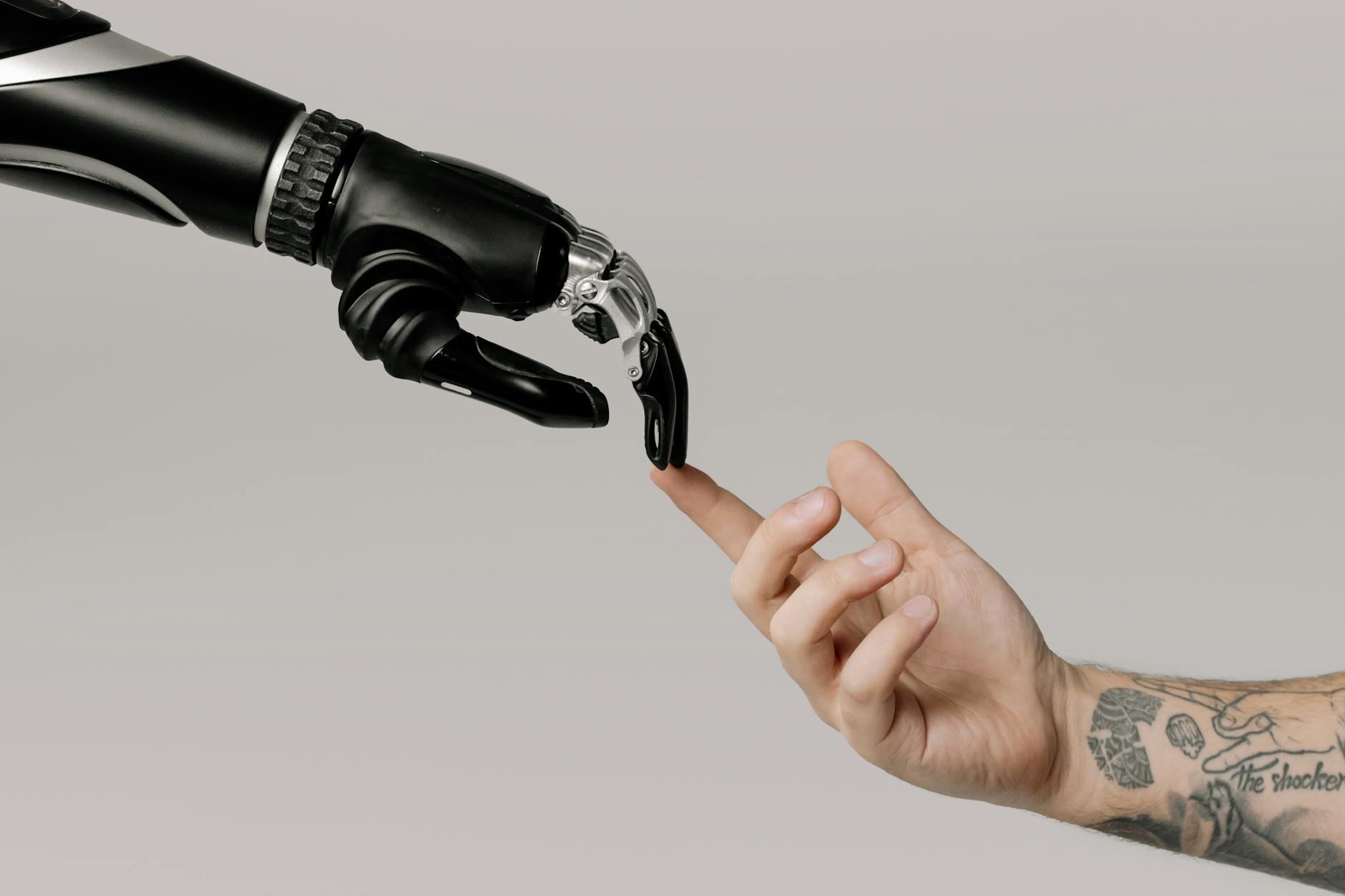Introduction
artificial intelligence general purpose technology. Imagine a world where machines think, learn, and adapt just like humans. 🤖 This isn’t science fiction anymore—it’s the reality of Artificial Intelligence (AI). But AI isn’t just another technological advancement; it’s a game-changer that’s reshaping our world in ways we’re only beginning to understand. artificial intelligence general purpose technology.
From healthcare to finance, manufacturing to entertainment, AI is leaving its mark everywhere. It’s not just a tool; it’s a General Purpose Technology (GPT) with the power to revolutionize every aspect of our lives. But what does this mean for us? How will it impact our jobs, our economy, and our future? 🌟

In this post, we’ll dive deep into the world of AI as a General Purpose Technology. We’ll explore its transformative power across industries, examine its economic implications, and look at the technological advancements driving its growth. artificial intelligence general purpose technology. We’ll also consider the challenges it presents and peek into the exciting future that lies ahead. Buckle up—we’re about to embark on a journey into the heart of the AI revolution! artificial intelligence general purpose technology. 🚀
Understanding AI as a General Purpose Technology
Definition and characteristics of GPTs
General Purpose Technologies (GPTs) are transformative innovations that significantly impact the entire economy and society. artificial intelligence general purpose technology. They are characterized by their wide-ranging applicability, potential for improvement, and ability to spawn complementary innovations. GPTs typically exhibit three key features:
- Pervasiveness
- Continuous improvement
- Innovation spawning
| Characteristic | Description |
|---|---|
| Pervasiveness | Applies to various sectors and industries |
| Continuous improvement | Evolves and becomes more efficient over time |
| Innovation spawning | Catalyzes the development of new technologies |
Historical examples of GPTs
Throughout history, several technologies have emerged as GPTs, revolutionizing economies and societies:
- Steam engine
- Electricity
- Internal combustion engine
- Computer and internet
How AI fits the GPT criteria
Artificial Intelligence aligns perfectly with the characteristics of a GPT:
- Pervasiveness: AI is being applied across diverse industries, from healthcare to finance.
- Continuous improvement: AI algorithms and models are constantly evolving, becoming more sophisticated and efficient.
- Innovation spawning: AI is driving the development of new technologies and applications, such as autonomous vehicles and personalized medicine.
Potential impact on various industries
AI’s potential to transform industries is vast and far-reaching:
- Healthcare: Improved diagnostics and personalized treatment plans
- Finance: Enhanced fraud detection and algorithmic trading
- Manufacturing: Optimized production processes and predictive maintenance
- Transportation: Autonomous vehicles and smart traffic management
- Education: Personalized learning experiences and adaptive assessments
As we delve deeper into AI’s transformative power, it becomes clear that its impact as a General Purpose Technology will be profound and long-lasting. artificial intelligence general purpose technology.

The Transformative Power of AI
A. Enhancing productivity across sectors
AI is revolutionizing productivity across various industries. From manufacturing to healthcare, AI-powered systems are streamlining processes and increasing efficiency. For example:
| Sector | AI Application | Productivity Boost |
|---|---|---|
| Manufacturing | Predictive maintenance | 20-30% reduction in downtime |
| Healthcare | Automated diagnosis | 30-40% faster patient processing |
| Finance | Algorithmic trading | 50% increase in transaction speed |
These improvements are just the tip of the iceberg, as AI continues to evolve and find new applications. artificial intelligence general purpose technology.
B. Revolutionizing decision-making processes
AI is transforming how businesses and organizations make decisions. By analyzing vast amounts of data and identifying patterns, AI systems can provide insights that humans might miss. This leads to:
- More accurate forecasting
- Reduced bias in decision-making
- Faster response times to market changes
C. Enabling new business models
The rise of AI has paved the way for innovative business models that were previously unfeasible. Some examples include:
- Personalized product recommendations at scale
- On-demand services powered by predictive algorithms
- AI-driven content creation and curation
These new models are reshaping entire industries and creating new opportunities for entrepreneurs and established businesses alike.
D. Addressing complex global challenges
AI’s capabilities extend beyond business applications. It’s also being employed to tackle some of the world’s most pressing issues:
- Climate change mitigation through optimized energy consumption
- Disease prediction and prevention in public health
- Smart city management for improved urban living
As AI continues to advance, its potential to address these complex challenges grows, promising a brighter future for humanity.
Key AI Technologies Driving Change
As we delve deeper into the transformative power of AI, it’s crucial to understand the key technologies that are driving this change. These technologies form the backbone of AI’s capabilities and are reshaping industries across the board.
Machine Learning and Deep Learning
Machine learning (ML) and its subset, deep learning, are at the forefront of AI innovation. These technologies enable systems to learn from data and improve their performance over time without explicit programming.
- ML Applications: Predictive analytics, recommendation systems, fraud detection
- Deep Learning Applications: Image recognition, speech recognition, autonomous vehicles
Natural Language Processing
Natural Language Processing (NLP) enables machines to understand, interpret, and generate human language. This technology is revolutionizing how we interact with computers and automate language-based tasks. artificial intelligence general purpose technology.
| NLP Application | Description |
|---|---|
| Chatbots | Automated customer service |
| Translation | Real-time language translation |
| Sentiment Analysis | Understanding customer opinions |
Computer Vision
Computer vision allows machines to interpret and make decisions based on visual data. This technology is transforming industries from healthcare to automotive.
Robotics and Automation
AI-powered robotics and automation are changing the face of manufacturing, logistics, and even healthcare. These technologies are enhancing efficiency and precision in various fields.
AI-Powered Analytics
AI is revolutionizing data analytics, enabling businesses to gain deeper insights from vast amounts of data. This technology is driving informed decision-making across industries.
With these key technologies driving change, we’ll next explore how AI is impacting the job market and reshaping workforce dynamics.
AI’s Impact on the Job Market
As artificial intelligence continues to evolve as a general purpose technology, its influence on the job market is becoming increasingly evident. This impact is multifaceted, presenting both challenges and opportunities for the global workforce. artificial intelligence general purpose technology.
A. Job displacement concerns
The rise of AI has sparked widespread concerns about job displacement. Many traditional roles are at risk of automation, particularly those involving repetitive tasks or data processing. However, the extent of this displacement varies across industries and job functions.
| Job Category | Automation Risk |
|---|---|
| Manufacturing | High |
| Data Entry | High |
| Customer Service | Medium |
| Creative Fields | Low |
| Healthcare | Low |
B. Creation of new job categories
While AI may eliminate some jobs, it’s also creating entirely new career opportunities. These emerging roles often require a blend of technical and soft skills:
- AI Ethics Officers
- Machine Learning Engineers
- Data Scientists
- AI-Human Interaction Designers
C. Upskilling and reskilling workforce
To adapt to the AI-driven job market, workers need to continuously update their skills. This involves:
- Developing digital literacy
- Cultivating critical thinking and problem-solving abilities
- Embracing lifelong learning
- Acquiring AI-complementary skills
D. Collaborative human-AI environments
The future workplace will likely see humans and AI working in tandem. This collaboration can enhance productivity and innovation, leveraging the strengths of both human creativity and machine efficiency. As we move forward, organizations must focus on creating environments that foster effective human-AI cooperation, ensuring that the workforce is prepared for this new era of technological integration. artificial intelligence general purpose technology.
Challenges and Considerations
As AI continues to evolve as a general purpose technology, several critical challenges and considerations must be addressed to ensure its responsible and beneficial implementation. artificial intelligence general purpose technology.
A. Ethical implications of widespread AI adoption
The widespread adoption of AI raises significant ethical concerns that society must grapple with:
- Bias and fairness in AI systems
- Accountability for AI-driven decisions
- Potential job displacement and economic inequality
| Ethical Concern | Description | Potential Solution |
|---|---|---|
| Algorithmic Bias | AI systems may perpetuate or amplify existing societal biases | Regular audits and diverse training data |
| Lack of Transparency | “Black box” AI systems make it difficult to understand decision-making processes | Explainable AI (XAI) techniques |
| Job Displacement | AI automation may lead to significant job losses in certain sectors | Reskilling programs and universal basic income |
B. Data privacy and security concerns
As AI systems rely heavily on data, protecting individual privacy and ensuring data security become paramount:
- Data collection and storage practices
- Consent and user control over personal information
- Vulnerability to cyber attacks and data breaches
C. Regulatory frameworks for AI governance
Developing comprehensive regulatory frameworks is crucial to guide the responsible development and deployment of AI:
- International cooperation on AI governance
- Balancing innovation with safety and ethical considerations
- Establishing standards for AI transparency and accountability
D. Ensuring equitable access to AI technologies
To prevent exacerbating existing inequalities, efforts must be made to ensure fair access to AI technologies:
- Bridging the digital divide
- Promoting AI literacy and education
- Supporting AI development in underrepresented communities
Addressing these challenges requires collaboration between policymakers, industry leaders, and the public. As we move forward, it’s crucial to consider the societal impact of AI and work towards solutions that maximize its benefits while mitigating potential risks. artificial intelligence general purpose technology.
Future Outlook for AI as a GPT
Potential economic growth projections
As AI continues to evolve as a General Purpose Technology (GPT), economists project significant economic growth. According to recent studies, AI could potentially contribute up to $15.7 trillion to the global economy by 2030. This growth is expected to be driven by:
- Increased productivity
- Enhanced decision-making
- Automation of routine tasks
- Creation of new industries and business models
| Region | Projected AI-driven GDP growth by 2030 |
|---|---|
| North America | $3.7 trillion |
| Europe | $3.1 trillion |
| Asia | $7.2 trillion |
| Rest of the world | $1.7 trillion |
Emerging AI applications and use cases
The future of AI as a GPT will likely see a proliferation of innovative applications across various sectors:
- Healthcare: Personalized medicine, drug discovery, and robotic surgery
- Education: Adaptive learning systems and AI-powered tutors
- Finance: Advanced fraud detection and algorithmic trading
- Agriculture: Precision farming and crop yield optimization
Integration with other technologies
AI’s potential will be further amplified through integration with other emerging technologies:
- Internet of Things (IoT): AI-powered analysis of vast IoT datasets
- 5G networks: Enhanced real-time AI applications and edge computing
- Quantum computing: Exponential increase in AI processing capabilities
- Blockchain: Improved data security and transparency in AI systems
Societal and cultural shifts driven by AI
As AI becomes more pervasive, we can expect significant societal and cultural changes:
- Redefinition of work and leisure
- Increased focus on creativity and emotional intelligence
- Ethical considerations surrounding AI decision-making
- Shifts in education to emphasize AI literacy and human-AI collaboration
The future of AI as a GPT promises transformative changes across industries, economies, and societies. As we continue to explore its potential, it’s crucial to address challenges and ensure responsible development and deployment of AI technologies.
Conclusion
Artificial Intelligence has emerged as a transformative force, reshaping industries and revolutionizing the way we work and live. As a General Purpose Technology, AI’s impact extends far beyond its immediate applications, driving innovation across sectors and creating new opportunities for growth and efficiency. From machine learning algorithms to natural language processing, AI technologies are fundamentally altering the landscape of business, healthcare, and countless other fields. artificial intelligence general purpose technology.
As we look to the future, it’s clear that AI will continue to evolve and expand its influence. While challenges such as ethical considerations and job market disruptions must be addressed, the potential benefits of AI as a General Purpose Technology are immense. By embracing AI responsibly and proactively, individuals and organizations can position themselves to thrive in an increasingly AI-driven world, unlocking new possibilities and driving progress on a global scale. artificial intelligence general purpose technology.







